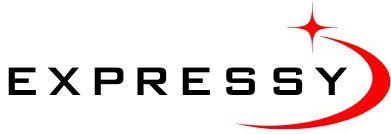Introduction
In today’s fast-paced digital landscape, organizations are not just seeking to move their workloads to the cloud—they’re also striving to transform their development and deployment processes. Cloud adoption alone cannot deliver business agility unless it’s accompanied by modern methodologies like DevOps and Agile. That’s why aligning the microsoft azure managed services partner with DevOps and Agile practices has become a strategic priority for companies looking to achieve faster time to market, continuous innovation, and operational excellence.
Microsoft’s Azure Migration Program (AMP) offers organizations a guided approach to move from on-premises to the Azure cloud with best practices, tools, and expert help. When integrated with Agile delivery models and DevOps automation, AMP becomes more than just a migration initiative—it evolves into a springboard for cloud-native innovation.
This article explores how businesses can strategically align their Azure migration journey with DevOps and Agile practices to unlock full digital transformation potential.
Understanding the Azure Migration Program
Before diving into integration, it’s essential to understand what the Azure Migration Program entails.
The Azure Migration Program is Microsoft’s comprehensive framework designed to simplify and accelerate cloud migration. It provides:
- Step-by-step guidance for assessing, migrating, and optimizing workloads.
- Access to tools like Azure Migrate, Azure Site Recovery, and Database Migration Service.
- Expert support through Microsoft engineers and certified Azure partners.
- Financial incentives and cost management resources.
- Cloud adoption framework for governance, security, and operations.
While AMP focuses primarily on technical workload transition, aligning it with DevOps and Agile practices ensures that cloud adoption is not a one-time effort but part of a broader, iterative innovation cycle.
Why Combine Azure Migration Program with DevOps and Agile?
1. Faster Delivery of Value
Agile practices promote short development cycles and rapid feedback, while DevOps enables automation in building, testing, and deploying applications. When Azure migration is done using DevOps pipelines and Agile sprints, businesses can start delivering value incrementally from Day One.
2. Minimized Risk
Agile promotes fail-fast, learn-fast iterations. Combining this with Azure’s robust rollback, monitoring, and security tools allows for faster issue identification and resolution during migration.
3. Cultural Transformation
Migrating to Azure isn’t just about infrastructure—it’s about changing how teams think, collaborate, and innovate. DevOps culture, grounded in collaboration and shared ownership, aligns perfectly with the objectives of cloud transformation.
4. Post-Migration Optimization
DevOps doesn’t stop at deployment. Continuous monitoring and optimization of workloads are critical after migration. AMP supports this by offering guidance on governance, performance tuning, and cost management—all of which integrate well with DevOps processes.
Key Strategies to Align AMP with DevOps and Agile
Here are actionable strategies to help your organization merge Azure Migration Program workflows with DevOps pipelines and Agile project management.
1. Adopt a Product-Centric Mindset
Traditional IT organizations treat infrastructure and applications as projects. However, in DevOps and Agile, the focus is on product ownership and continuous delivery.
How to align:
Assign cross-functional Agile teams to manage each workload or application as a product throughout the Azure migration journey. These teams should include developers, operations staff, security experts, and Azure architects.
2. Establish Agile Migration Sprints
Rather than migrating everything at once (big bang), adopt incremental delivery by breaking the migration into Agile sprints. Start with a minimum viable migration (MVM) for low-risk apps and iterate.
How to align:
- Use tools like Azure Boards or Jira to manage migration tasks in sprint backlogs.
- Include backlog items for testing, infrastructure as code (IaC), and security reviews.
- Schedule regular sprint reviews and retrospectives to refine the migration process.
3. Integrate Azure Migration with CI/CD Pipelines
DevOps relies on continuous integration and deployment pipelines (CI/CD) to automate the software delivery process.
How to align:
- Use Azure DevOps or GitHub Actions to automate post-migration deployment processes.
- Embed infrastructure provisioning in the pipeline using Terraform, Bicep, or ARM templates.
- Set up CI/CD to automatically update environments during or after migration with no manual intervention.
4. Implement Infrastructure as Code (IaC)
Infrastructure as Code enables repeatable, version-controlled provisioning of Azure resources, making it a fundamental part of DevOps in the cloud.
How to align:
- Define all cloud infrastructure in code using Bicep or Terraform.
- Store IaC scripts in a version-controlled repository.
- Apply these scripts during Azure Migration Program activities to ensure consistent and auditable deployments.
5. Automate Testing and Validation
DevOps thrives on automated testing, which minimizes human error and accelerates feedback loops.
How to align:
- Integrate testing frameworks like Selenium, JMeter, or Postman into your Azure DevOps pipelines.
- Create unit, integration, and load tests that run automatically post-migration to validate application behavior in Azure.
- Use Azure Monitor and Application Insights to verify health and performance.
6. Security and Compliance Integration (DevSecOps)
Security should be baked into your migration process, not bolted on later. DevSecOps promotes embedding security into the DevOps lifecycle.
How to align:
- Use Azure Security Center and Defender for Cloud to apply security policies during migration.
- Automate compliance checks using policy-as-code tools.
- Include security scanning of IaC templates in your CI/CD pipelines.
7. Use Azure Blueprints and Landing Zones
Azure landing zones provide a governed foundation for cloud adoption aligned with the Cloud Adoption Framework (CAF).
How to align:
- Collaborate with your Azure partner to implement landing zones as code.
- Build these zones into your DevOps pipeline so that any environment provisioning adheres to governance best practices.
- Regularly refactor landing zones using feedback from Agile retrospectives.
8. Monitor Everything: Feedback Loops
Feedback is a pillar of both Agile and DevOps. Azure offers powerful observability tools to feed performance data back to teams in real-time.
How to align:
- Use Azure Monitor, Log Analytics, and Application Insights to monitor cloud workloads.
- Display real-time dashboards on team boards to drive daily stand-ups.
- Feed telemetry data back into backlog grooming for continuous improvement.
9. Collaborate with Azure Partners Skilled in DevOps
If your internal team is still developing DevOps maturity, consider partnering with a certified Azure Migration Program partner who brings deep DevOps experience.
How to align:
Choose a partner that:
- Has a proven DevOps track record.
- Offers co-development workshops.
- Can accelerate your Agile maturity as part of your cloud migration strategy.
Real-World Example: Migrating a Legacy CRM to Azure with DevOps
A mid-size enterprise migrating its legacy CRM system to Azure used the Azure Migration Program in conjunction with DevOps practices. They:
- Created a landing zone using IaC.
- Broke the migration into Agile sprints (Assessment, Pilot, Migration, Optimization).
- Built CI/CD pipelines for CRM microservices.
- Used Azure Test Plans to validate each sprint.
- Monitored post-migration KPIs using Azure Monitor.
As a result, they achieved a 40% reduction in deployment time, 25% improvement in system performance, and a smoother developer experience in Azure.
Final Thoughts
Aligning the Azure Migration Program with DevOps and Agile practices turns a traditional infrastructure upgrade into a true digital transformation journey. It’s not just about moving workloads to the cloud—it’s about enabling your teams to deliver better software, faster and more securely, with feedback at every step.
By embedding DevOps into the migration process and using Agile to guide iterative execution, organizations can ensure their transition to Azure is smooth, scalable, and future-ready.












